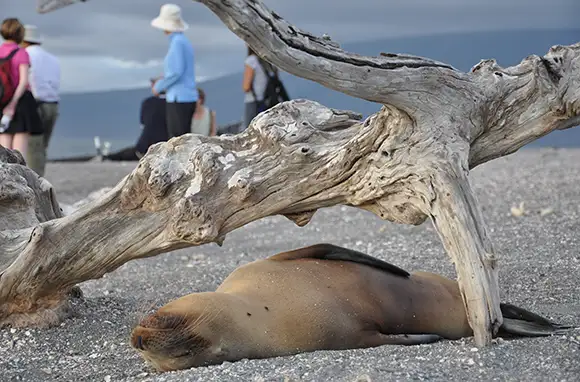
Off the coast of the Galapagos Islands, the ocean teems with sea lions, penguins, and dive-bombing boobies. The moment you plunge into the sea, you’ll soon find yourself within sight of some kind of living creature. And land adventures in the Galapagos are equally enthralling: Bold animals recklessly approach human invaders, unconcerned. Given the fearlessness of the endemic animal populations, it’s easy to see why the Galapagos are known as “the enchanted islands.”
Pictures are probably better suited than words to give voice to the magic of the Galapagos. So here are 10 photos from my recent trip, a seven-night cruise aboard La Pinta. To learn more about traveling to the Galapagos, read Trip Report: Cruising the Galapagos.
Image Gallery
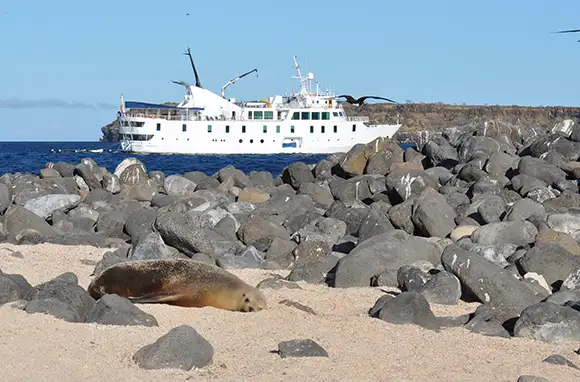
I toured the Galapagos aboard La Pinta, a 48-passenger yacht that had several dining areas, an outdoor hot tub, a bar, a library, and even Wi-Fi. Roughly 100 ships are permitted to carry tourists around the Galapagos. In order to protect the pristine islands, the Ecuadorian government regulates the number of vessels that can be in the Galapagos at any given time.

I toured the Galapagos aboard La Pinta, a 48-passenger yacht that had several dining areas, an outdoor hot tub, a bar, a library, and even Wi-Fi. Roughly 100 ships are permitted to carry tourists around the Galapagos. In order to protect the pristine islands, the Ecuadorian government regulates the number of vessels that can be in the Galapagos at any given time.
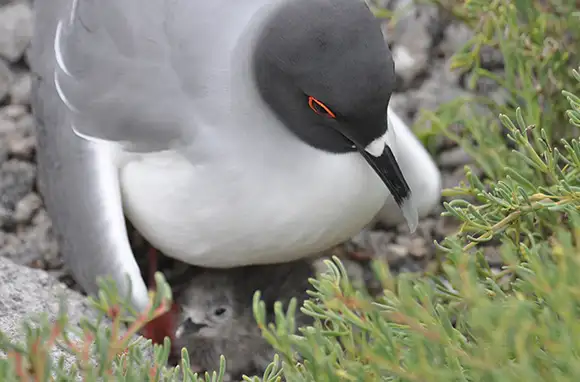
A swallow-tailed gull, native to the Galapagos, protected its young chick. Most of the birds we encountered on the islands were remarkably fearless. This gull and its baby showed no concern about the encroaching humans who squatted several yards from their nest.
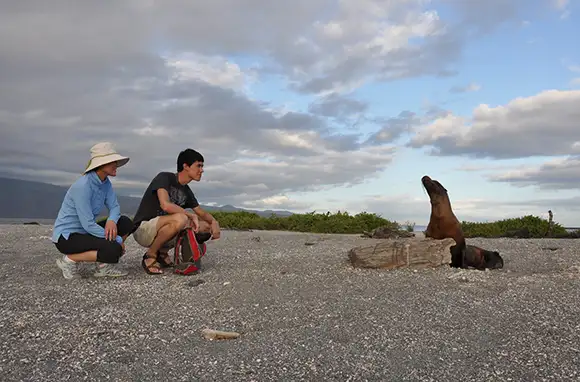
Groups of visitors are only permitted to tour the Galapagos Islands with a certified naturalist guide. Under the guide's supervision, I stayed a fair distance from all wildlife—the recommended two yards. Still, this range is close enough to view wild animals in amazing detail and to snap incredible photos (with or without a macro camera lens). In this shot on Fernandina Island, an adult sea lion seemed to pose for a picture.
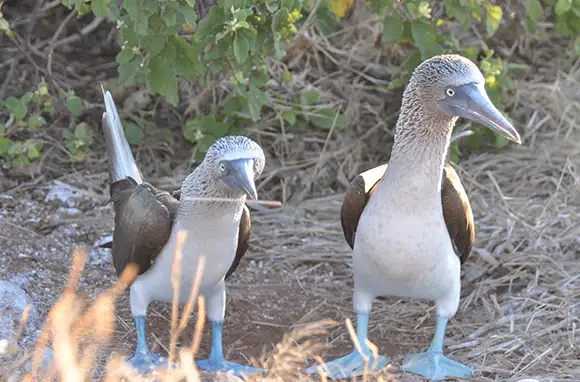
A pair of blue-footed boobies entertained on North Seymour Island. We were lucky enough to witness the famed booby courtship dance, in which the male bird opened his wings and picked up his sky-blue feet to show his companion. After the dance, the boobies, without any trace of shyness, proceeded to mate in front of our small group. Several of us moved on to give them some privacy, but the birds didn't seem to care.
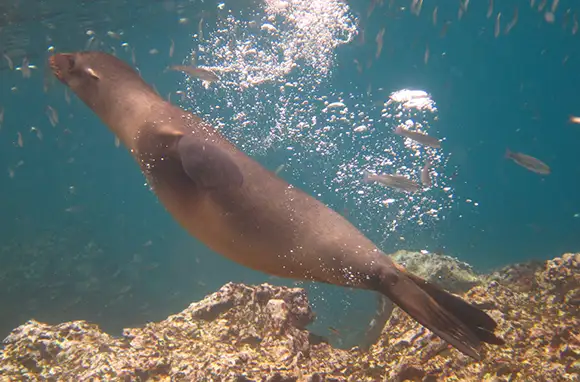
The cruise featured a snorkeling excursion nearly every day of the itinerary, giving me the chance to get close to a menagerie of underwater creatures, plus mammals and birds who, like humans, don't dwell for too long under the water. The sea lions in particular seemed curious about our group as we splashed along in goggles and flippers. The animals often circled us playfully, only to dart away faster than we could ever hope to move in the ocean.
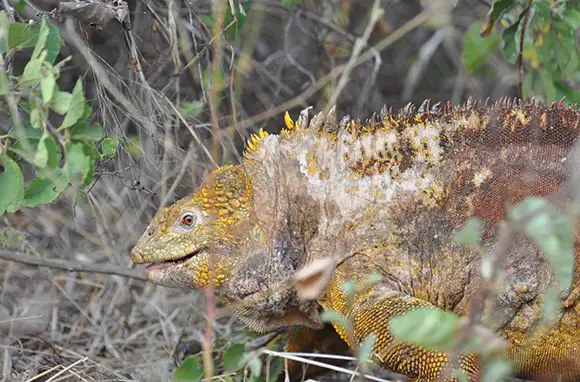
A striking yellow iguana lurked on Santa Cruz Island. This land iguana is endemic—you won't see this wild guy anywhere else in the world. The Galapagos is also home to the only species of iguana that knows how to swim: Marine iguanas (not pictured) spend their days paddling in the ocean as well as crawling on land.
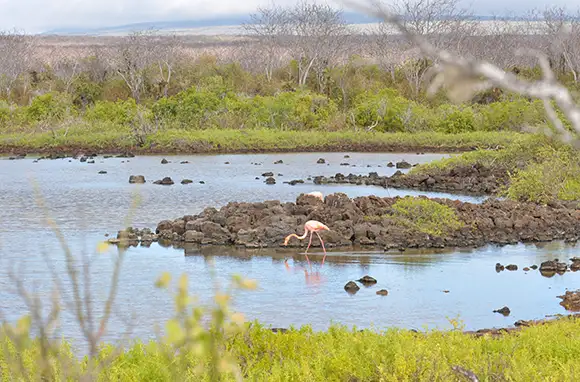
The Galapagos landscape was essentially arid and rocky. But ample pops of color were furnished by yellow cactus flowers, pink flamingos, and lime-green shrubs. I spotted this pair of birds fishing for shrimp on Santa Cruz Island. Unlike most of the native birds on the Galapagos, flamingos are wary of human presence, so one mustn't get too close.
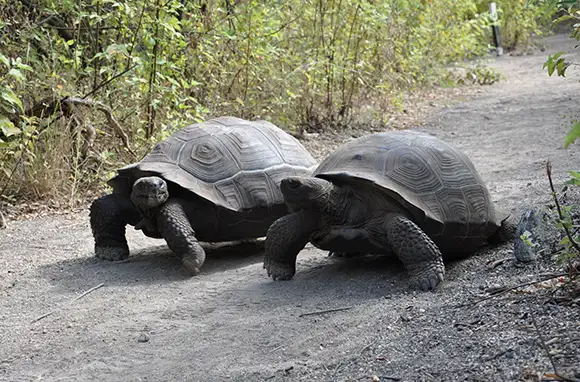
A pair of giant tortoises blocked the path on Isabela Island. When naturalist Charles Darwin first discovered these ancient creatures for himself in the 19th century, he attempted to ride one. (This is not something that visitors today are encouraged to do.) Though unlikely, it's possible that the tortoise who played horse to Darwin is still around: These endangered creatures have been known to live for more than 150 years.
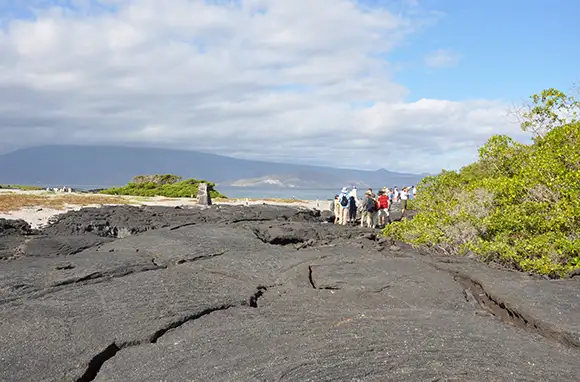
The Galapagos Islands are volcanic in origin, as was evident on rocky, barren Fernandina. Visitors to the islands should keep in mind that igneous rock wreaks havoc on all but the most well-built shoes. One person in my group had packed old hiking boots, only to find his soles flapping open after hours of hiking on solidified magma. When planning a visit to the Galapagos, quality walking shoes should be at the top of your must-pack list.
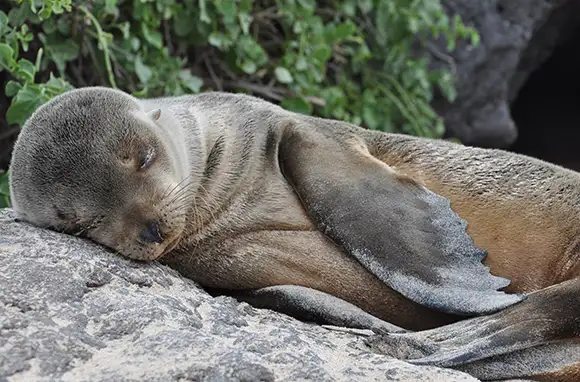
This young sea lion, peacefully sleeping on a rocky beach on Santa Fe Island, became the unwitting star of countless vacation photos. As he slumbered, my fellow passengers snuck up behind him and took photos of each other smiling behind fur- and sand-shrouded flippers. He didn't stir a whisker.
Do you have any questions about traveling to the Galapagos? Share them in the comments!
You Might Also Like:
We hand-pick everything we recommend and select items through testing and reviews. Some products are sent to us free of charge with no incentive to offer a favorable review. We offer our unbiased opinions and do not accept compensation to review products. All items are in stock and prices are accurate at the time of publication. If you buy something through our links, we may earn a commission.
Top Fares From
Today's Top Travel Deals
Brought to you by ShermansTravel
Kenya: 14-Night Tour, Incl. Tanzania &...
smarTours
 vacation
$7125+
vacation
$7125+
7-Night Caribbean Round-Trip Cruise From Orlando:...
Norwegian Cruise Line
 cruise
$739+
cruise
$739+
Ohio: Daily Car Rentals from Cincinnati
85OFF.com
 Car Rental
$19+
Car Rental
$19+



